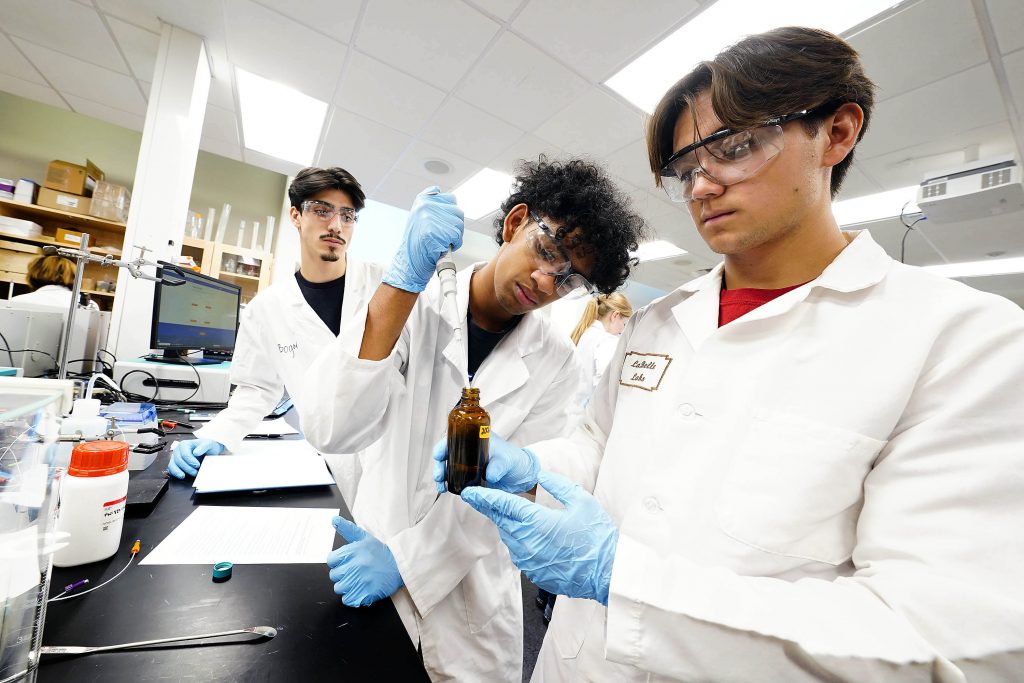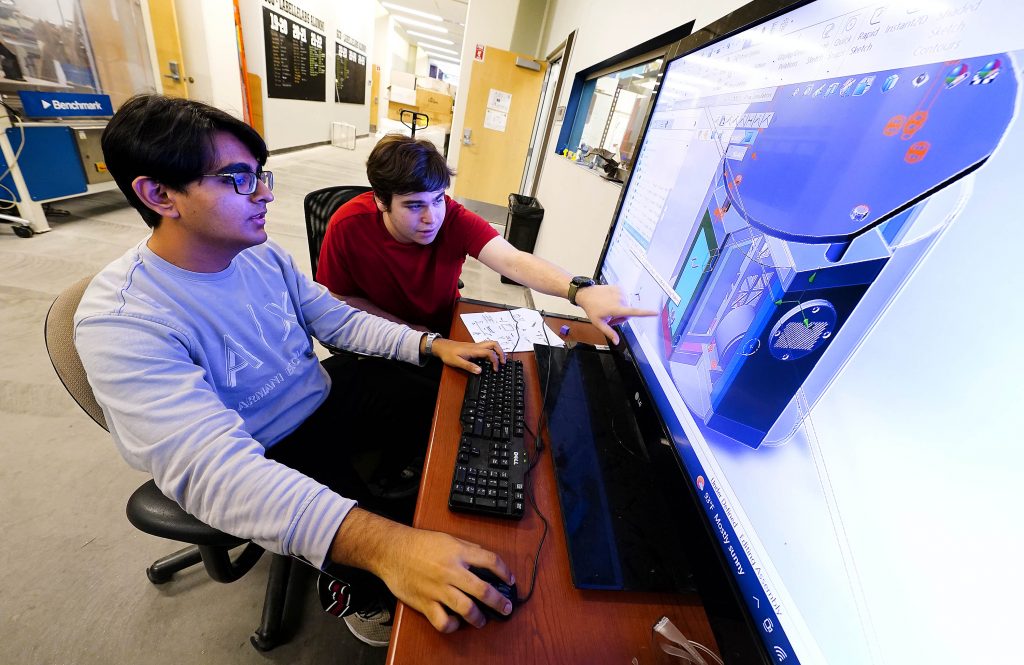
Photos by Ralph Freso
EDITOR'S NOTE: This is the final story in a three-part series about GCU's High School STEM Internship Program.
Surrounded by large rooms of machinery, six high school students sat around a rectangular table with computers, working in small pairs as they attempt to complete a project.
“Right now, we're designing our molds for the microneedle patches,” said Keegan Burns, a senior at Paradise Valley High School.
But the students, who were part of the biomedical engineering section of Grand Canyon University’s monthlong High School STEM Internship Program, aren’t simply trying to concoct a more effective method of removing acne or wrinkles.
“It will be for diabetes and for measuring blood glucose levels, maybe insulin and things like that,” said Burns, one of about a dozen high school juniors and seniors who were part of the program. The initiative was hosted by K12 Educational Development and the Honors College in partnership with the College of Science, Engineering and Technology through the end of June.
The patches still need to be gold sputtered (to prevent irritation or an allergic reaction) and tested in a wet lab (where safety is paramount due to several types of chemicals). Nevertheless, the program enables interns to pursue ambitious goals as well as learn equipment previously not available to them.
“Unlike a lot of the other guys here, I've never used SolidWorks (a computer-aided design and engineering application), and I’m learning how to use 3D printing,” said Arnav Singh, a senior at Arizona College Prep. I think that's important for the future. And it's something that I've been learning along the way, and everyone's been helping me out with it.”
Like GCU’s STEM internship for anatomy and dissection, the biomedical engineering interns are given a healthy dose of freedom to learn and explore in a research lab in a five-week program.
“I’m mostly leaning toward engineering because that's the path I want to take in the future,” said Jacob Silber, a senior at Paradise Valley. “But the chemistry side was very interesting, because I want to broaden my range of understanding. It was very fun to learn how the electrochemistry works with diffusion rates and those constants. So more engineering, but everything is exciting.
“And then when you work with professionals in the future, you'll have a bit more knowledge and bridge that gap a little.”
GCU biomedical engineering professor Dr. Jeff La Belle, National Science Foundation S-STEM MAXUS Program Director, encourages his students to experiment and learn from their mistakes. It's the same philosophy he uses with his GCU students, such as junior Brayden Nungesser, who assisted the interns and even learned from them.

“Every day I tell La Belle I learned something new,” said Nungesser, a junior majoring in mechanical engineering. “Obviously, there's a ton of equipment around this and just learning it day by day. He's slowly working us through different things because some equipment is more technical than others.
“He always starts everyone off at the super base level stuff, like wood shop. Most kids start there, and then are put into the metal shop before going into his labs. And then we just kind of bounce around with whatever we need, which is cool.
“And once he teaches you, he gives you full rights and responsibility, like ‘Take care of it’ and ‘Do it on your own.’ Other than if you have questions, ‘It's up to you guys to figure it out.’ That gives us freedom. That's cool, rather than have him or somebody else stand over you and say, ‘Please stop.’"
La Belle has observed that mentors in industry, academia, blacksmithing and martial arts allowed pupils to perform better or faster because of their guidance.
The internship was a perfect fit for Abhiraj Gedela, whose CREST Program (Center for Research, Engineering, Science and Technology) at Paradise Valley focused on biomedical engineering.
“There's a lot of general and a lot of very specific terms that we're learning, and a lot of different specific skills that can be applied to the industry,” Gedela said. “I think with all those different skills, that kind of gives you a lot of assets to move forward within this field.”
Gedela added that working on various projects involving electrochemistry, 3D printing and laser cutting at La Belle Labs have given him and his fellow students a unique opportunity.
“I'm still exploring all the different strands (of engineering),” Gedela said. “That was also one of the reasons why I wanted to do this, to get basically a feel for how biomed engineering is like.”
Jack Xie, a senior at Arizona College Prep, noticed a distinct difference between the GCU internship and a similar course at Arizona State University.
“I also did something at ASU, and it had nowhere near as much (machinery) as they have here,” Xie said. “I was very surprised. … Here we got to experience all the new things and machinery.”
The variety of interests and expertise has fostered a healthy environment that has enhanced progress.
Nungesser recalled struggling with a project, only to receive help from a student with a biomedical concentration.
“It took him one day to figure it out,” Nungesser said. “And I helped him with a few other things. It's like we just bounce ideas and things off each other. It's kind of what engineers do to solve problems.”
***
Related content:
GCU News: High school interns sharpen anatomy skills at GCU's Cadaver Lab
GCU News: GCU storms minds of high schoolers with AI, cyber, Lego Mindstorm















